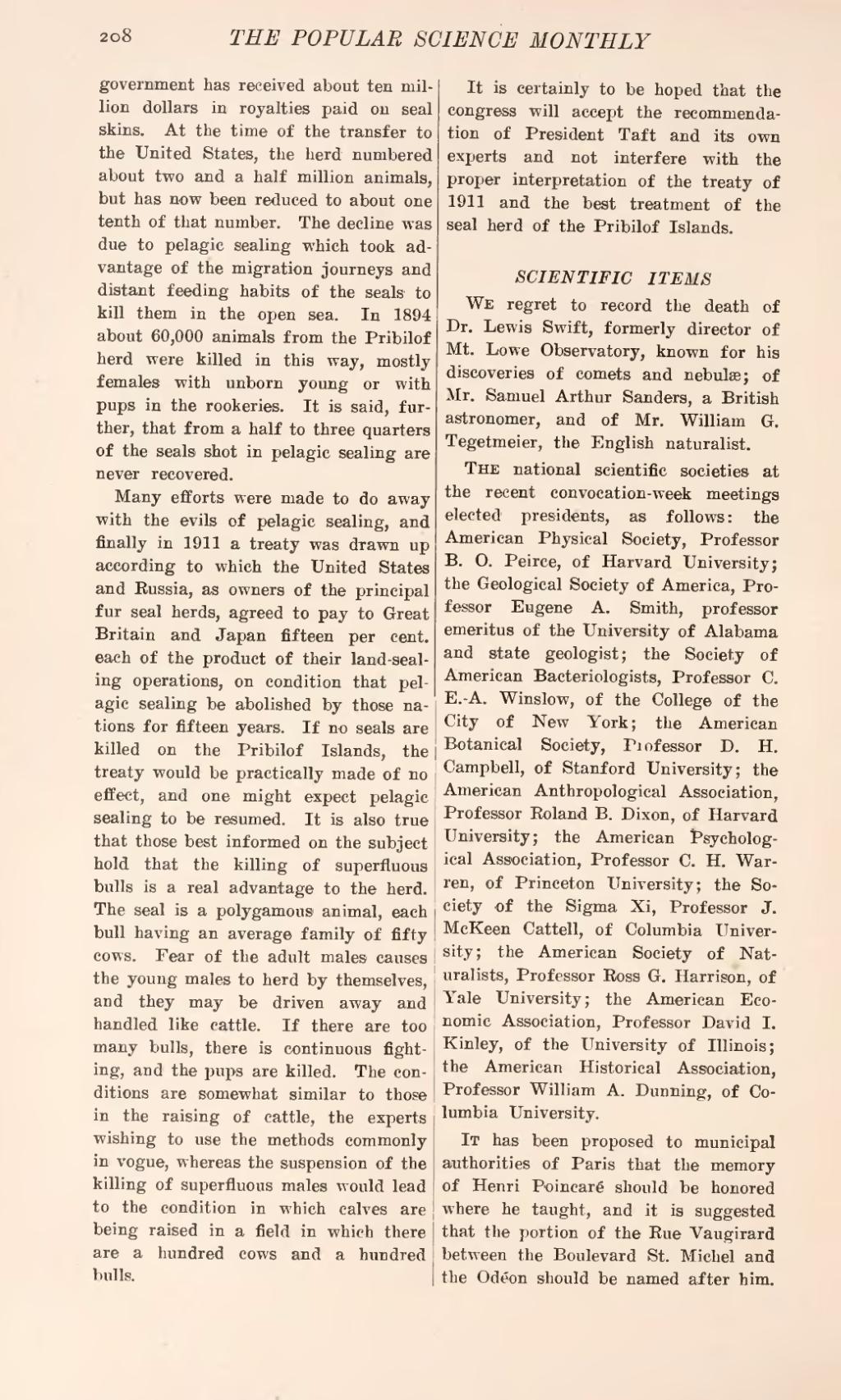government has received about ten million dollars in royalties paid on seal skins. At the time of the transfer to the United States, the herd numbered about two and a half million animals, but has now been reduced to about one tenth of that number. The decline was due to pelagic sealing which took advantage of the migration journeys and distant feeding habits of the seals to kill them in the open sea. In 1894 about 60,000 animals from the Pribilof herd were killed in this way, mostly females with unborn young or with pups in the rookeries. It is said, further, that from a half to three quarters of the seals shot in pelagic sealing are never recovered.
Many efforts were made to do away with the evils of pelagic sealing, and finally in 1911 a treaty was drawn up according to which the United States and Russia, as owners of the principal fur seal herds, agreed to pay to Great Britain and Japan fifteen per cent, each of the product of their land-sealing operations, on condition that pelagic sealing be abolished by those nations for fifteen years. If no seals are killed on the Pribilof Islands, the treaty would be practically made of no effect, and one might expect pelagic sealing to be resumed. It is also true that those best informed on the subject hold that the killing of superfluous bulls is a real advantage to the herd. The seal is a polygamous animal, each bull having an average family of fifty cows. Fear of the adult males causes the young males to herd by themselves, and they may be driven away and handled like cattle. If there are too many bulls, there is continuous fighting, and the pups are killed. The conditions are somewhat similar to those in the raising of cattle, the experts wishing to use the methods commonly in vogue, whereas the suspension of the killing of superfluous males would lead to the condition in which calves are being raised in a field in which there are a hundred cows and a hundred bulls.
It is certainly to be hoped that the congress will accept the recommendation of President Taft and its own experts and not interfere with the proper interpretation of the treaty of 1911 and the best treatment of the seal herd of the Pribilof Islands.
SCIENTIFIC ITEMS
We regret to record the death of Dr. Lewis Swift, formerly director of Mt. Lowe Observatory, known for his discoveries of comets and nebulæ; of Mr. Samuel Arthur Sanders, a British astronomer, and of Mr. William G. Tegetmeier, the English naturalist.
The national scientific societies at the recent convocation-week meetings elected presidents, as follows: the American Physical Society, Professor B. O. Peirce, of Harvard University; the Geological Society of America, Professor Eugene A. Smith, professor emeritus of the University of Alabama and state geologist; the Society of American Bacteriologists, Professor C. E.-A. Winslow, of the College of the City of New York; the American Botanical Society, Professor D. H. Campbell, of Stanford University; the American Anthropological Association, Professor Roland B. Dixon, of Harvard University; the American Psychological Association, Professor C. H. Warren, of Princeton University; the Society of the Sigma Xi, Professor J. McKeen Cattell, of Columbia University; the American Society of Naturalists, Professor Ross G. Harrison, of Yale University; the American Economic Association, Professor David I. Kinley, of the University of Illinois; the American Historical Association, Professor William A. Dunning, of Columbia University.
It has been proposed to municipal authorities of Paris that the memory of Henri Poincaré should be honored where he taught, and it is suggested that the portion of the Rue Vaugirard between the Boulevard St. Michel and the Odéon should be named after him.

